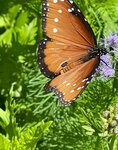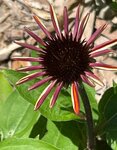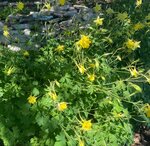


Meet Shawn Massey, a dedicated master gardener from the Lake Granbury Master Gardener’s Club. Since moving to Granbury in 2018, Massey has been passionate about gardening. When she learned about the master gardener program, she jumped at the chance to join. Massey loves sharing her gardening knowledge and helping others with their plants. Whether it’s answering questions about troubled plants or suggesting what to plant in a specific area, Massey is always ready to lend a hand. One of her favorite plants is the Phlox “John Fanick” for its beautiful pink flowers that attract hummingbirds.
When selecting drought-tolerant plants for Hood County’s scorching summers, Massey advises focusing on Texas native perennials. While there are few actual Texas native plants, many have adapted to the area and become native. Massey provides examples such as agave, damianita, buckeye, columbine, coneflower, coral berry, flame acanthus, blackfoot daisy, guara, coral honeysuckle, salvia greggi, goldeneye skeleton-leaf, Texas primrose, turk’s cap, verbena, red yucca, and zexmenia. These plants are well-suited to Hood County’s climate and can thrive even in drought conditions, making them excellent choices for landscaping.
“For vibrant summer landscapes, consider planting coneflower, flame acanthus, turk’s cap, blackfoot daisy, coral honeysuckle, various salvias, lantanas, skeleton-leaf, verbena, and zexmenia,” suggests Massey. These hardy perennials thrive in the summer heat and add a burst of color to any garden.
Massey emphasizes the importance of choosing grasses and ground covers that can withstand the Hood County heat. Pink muhly grass, sea oats grass, and Mexican feather grass are among her top picks for resilient grass options. A few ground covers that thrive in this region are Asian jasmine, mondo grass, and liriope.
“Plant in well-drained soil amended with compost and expanded shale as needed. Using an automatic watering system with soaker hoses or drippers to water once or twice a week is recommended, Massey says, “additionally, applying a slow-release fertilizer as needed and always mulching beds to keep moisture in, with mulch depth between 1/2 inch to 1 inch, are key practices. It is also crucial to read plant labels to ensure they are placed in their proper locations.”
Massey recommends a variety of plants that appeal to bees, butterflies and hummingbirds for gardeners looking to attract pollinators.
While sharing tips for maintaining a thriving garden, Massey also points out plants that should be avoided. “Certain tropical plants may struggle in colder temperatures, and some species can be harmful to bees, including mountain laurel, jimsonweed, Carolina jessamine, and specific types of rhododendrons,” she explains. Additionally, Massey cautions against planting tropical milkweed unless one is committed to cutting it down to the ground every November before Thanksgiving. This practice is essential for preventing a protozoan parasite from infecting Monarchs, disrupting their migration, and potentially leading to their demise.
Lastly, Massey addresses the perennial dilemma of deer-resistant plants. “While deer will eat almost anything when hungry, many drought-tolerant plants in Hood County are considered deer-resistant,” she notes. These include coneflower, guara, and turk’s cap, offering homeowners peace of mind in their gardening endeavors.
With Massey’s guidance, Hood County residents can cultivate beautiful, resilient gardens that flourish even in the hottest Texas summers.
Explore Hood County's drought-tolerant plant showcase at the Lake Granbury Master Gardener's demonstration garden at 1410 Pearl St. Witness the resilience of local flora, including favorites like agave and red yucca. Visit any Monday from 8 to 11 a.m. for expert advice from dedicated master gardeners or browse internet photos for inspiration.